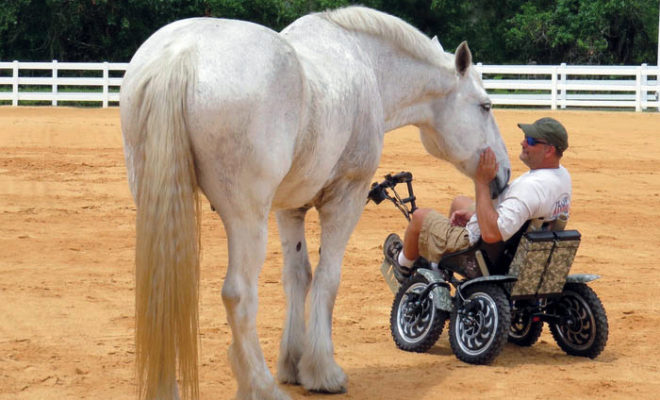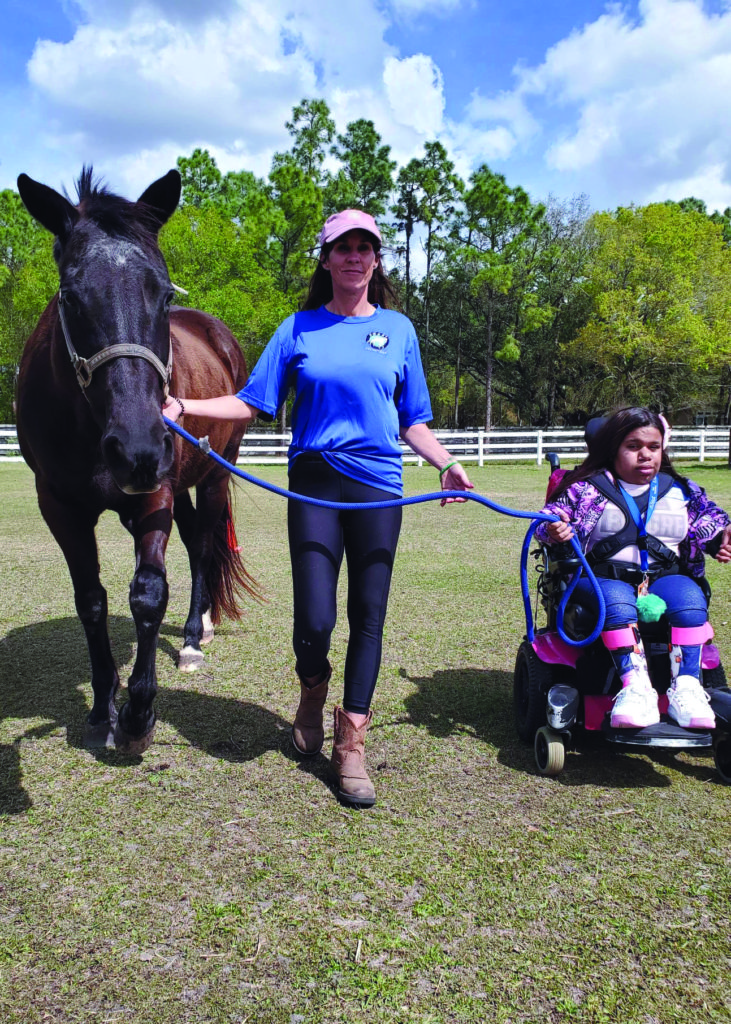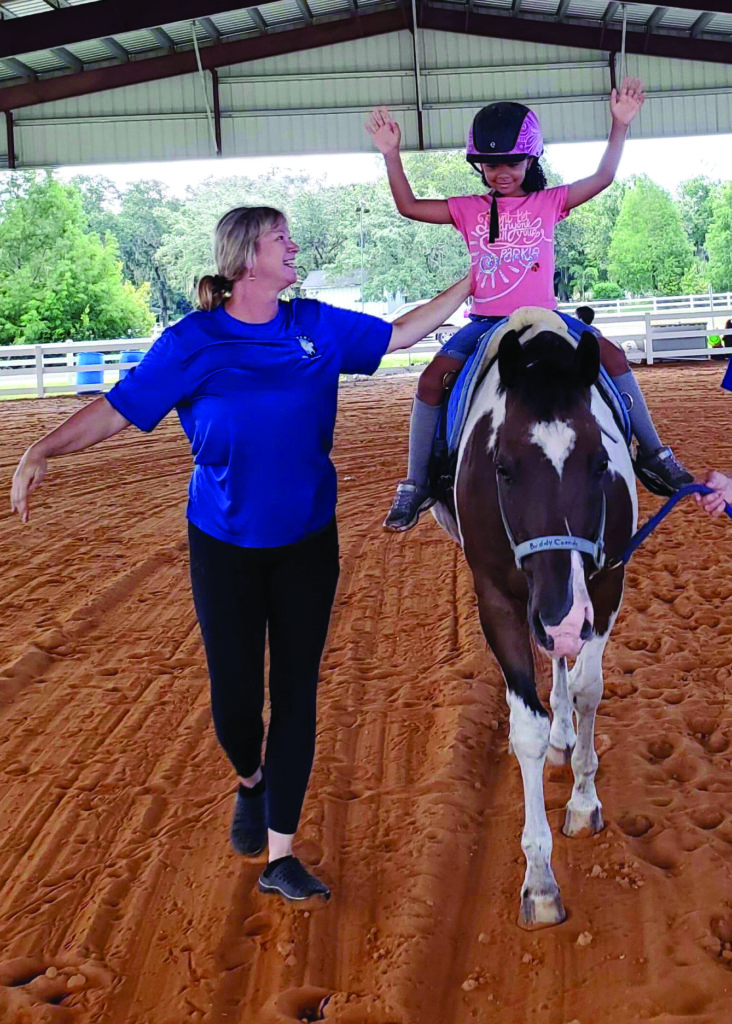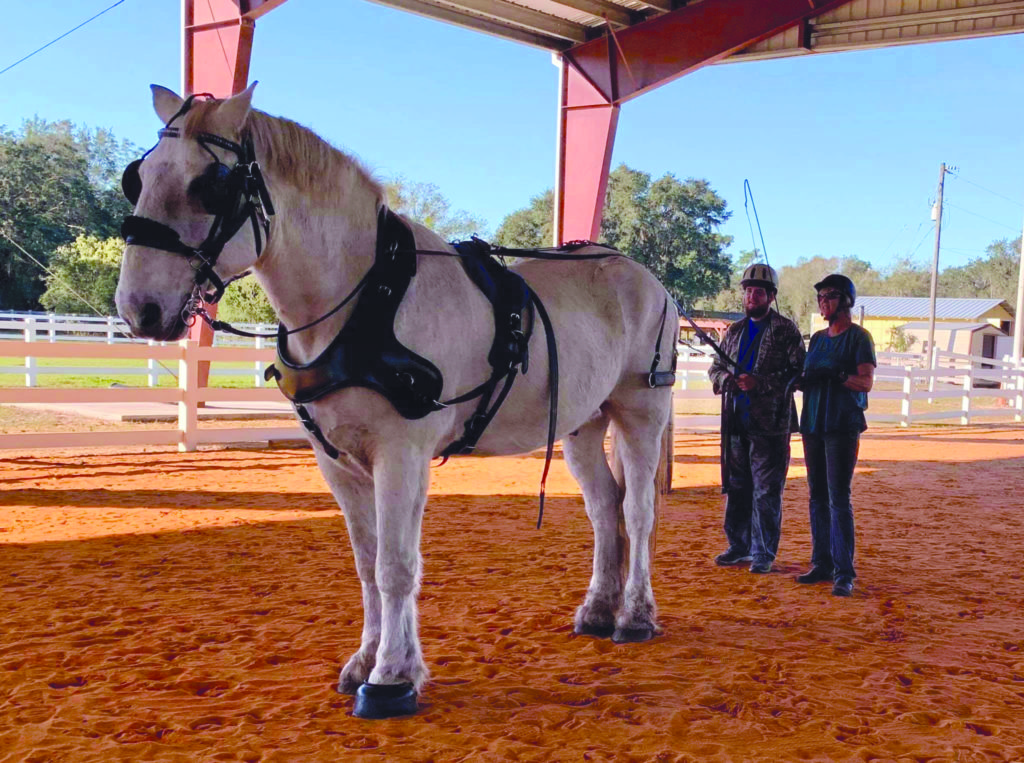
Philanthropy
Horse Magic: SMART Harnesses Equine Healing Power
By Sylvia Whitman
November 2020 – Melissa Spillenkothen began volunteering at the Sarasota Manatee Association for Riding Therapy (SMART) in 2012, not long after she moved to the Gulf Coast from Washington, D.C. “My initial draw was that I used to be, and still am, in love with horses,” she says. SMART’s mission—enriching the lives of people with special needs through therapeutic horse-related programs—came to captivate her as well. “I thought, that’s the perfect match: You get to do something with a beast that you love helping people achieve life goals. I was very excited by that, and I continue to be.”
Founded in the 1987, SMART serves children and adults who have physical, emotional, or cognitive disabilities, from blindness to muscular dystrophy to epilepsy to post-traumatic stress disorder (PTSD). Among other credentials, the nonprofit achieved Professional Association of Therapeutic Horsemanship (PATH) International premier accreditation in 2013, one of only 15 centers in Florida with that recognition. For wheelchair-bound clients or others unable to sit on a horse, SMART also offers therapeutic carriage driving. Other programs bring grieving children, vets, and survivors of sex trafficking to the barn to feed and groom the herd.

At SMART’s 23-acre equine center in Bradenton, Spillenkothen has mucked out stalls, curried horses, and walked beside riders in the arena. A few years ago, she took on managing other volunteers. Now she also serves as vice president of SMART’s board of directors.
Horse magic never ceases to amaze her. “There’s something very special—and it’s almost indescribable—about the way a horse can interact with a person,” she says. “And the way the horses adjust their behavior when they are around people with challenges. They really become very empathic to our clients. There’s an awful lot of confidence to be gained sitting five feet up on a beast that’s moving and knowing that you are in charge.”
That confidence changes lives, Spillenkothen has observed. Over months and sometimes years, she’s seen so many students grow “from being obstreperous and not listening to instruction, and maybe sometimes exhibiting anger by kicking or spitting … to being self-assured, polite for the most part, learning to ride, getting along with people. And it can bring tears to your eyes because they make such great progress.” She says, “It continues to be a very, very rewarding place to volunteer and to feel like I’m making some very small contribution to changes in our society.”
The Pandemic Steeplechase
Last spring SMART was cantering along. It was also welcoming a new executive director, Rebecca Blitz. Having grown up with horses, Blitz had volunteered with her daughter at SMART, a respite from her full-time job as regional director of the local Make-A-Wish affiliate. “I think I needed SMART more than they needed me,” she says. “If you’re having a bad day, you go out and put your hand on a horse.” After six years of her working with Wish families and their critically ill children, the cumulative grief was taking a toll. Her last funeral—for her son’s best friend, who died of a brain tumor—“did a number” on her, she says. “It made me look differently at what I wanted to do with my life.”

So, she accepted the top job at SMART—and started on the very day that the coronavirus forced a shutdown. “I thought, Is this an April Fool’s joke?”
Although Blitz can laugh, a little, she stepped into a crisis. Like many small nonprofits, SMART suddenly found itself with more expenses than income at a time when many community donors were either focusing on human survival needs or pulling back to assess their own financial standing. But SMART has its own pressing food-and-shelter needs—15 horses, which each cost an average of $850 per month to maintain with feed, hay, vet bills, vaccinations, and farrier care (essential hoof pedicures). Although volunteer labor usually keeps staff costs to a minimum, many regulars over age 65 didn’t feel safe leaving home for the barn last spring.
One thin silver lining to the shutdown: It gave Blitz a chance to understand “what was needed on the property.” With the board, she worked on emergency and contingency plans.
The hardnosed business move—culling the aging herd, like 34-year-old Carley—was out of the question. “Once the horses are here, they’re family,” says Blitz. Their temperaments suit the work. Even Magic, blinded by an infection following a fly in his eye, inspires schoolkids in a literacy program that features a book about the horse written by his donor.
SMART instituted Covid-prevention guidelines for the facility, wiping down surfaces and requiring masks. In the summer the nonprofit enlisted a few new young volunteers, high schoolers needing service hours to graduate. By July, it was able to offer summer camps, outside in the arena, with social distancing. For many families, says Blitz, “We are a necessity from the mental health side.”
In mid-September, SMART began reopening, in stages, with more individual programs, although small groups also gather with safety measures in place. In 2019 SMART served 460 clients, with over 200 volunteers donating over 14,000 hours. Not everyone has returned. Some students just can’t tolerate a mask. School field trips to the farm are on hold. Nonetheless, about 50 people with special needs remain on a waiting list.

Most youth activities used to take place after school, but with a number of kids learning remotely from home, SMART is offering morning as well as late afternoon lessons, 30 to 60 minutes long. Each session with a PATH-certified instructor costs about $120 to mount, says Blitz, but donor-funded scholarships have enabled SMART to charge most families only $35. Although most SMART riders need a medical referral, insurance doesn’t cover the therapy. Come January, however, Blitz says she will have to raise rates. “We have lost an exorbitant amount of funding,” she says.
To make ends meet, SMART is exploring new revenue streams. Weddings on this bucolic horse farm? Recreational riding lessons for folks without special needs—no PATH instructor required? When groups can travel again, they may find new reasons to visit the facility, such as a therapeutic garden. And the team is developing a STEM unit to complement the literacy program, with horse math that has participants measure feed and environmental science that features the endangered gopher tortoises on the property.
In contrast to Make-A-Wish with its national presence and resources, SMART is more like “the little engine that could,” says Blitz.
One Rider Back in the Saddle
Joseph Woolbert, a Parrish fifth grader with autism, began riding with SMART about three years ago, and his mom, Belinda, describes his transformation as “huge.” Before, “there wasn’t much he could do independently, and his communication was a little off.” But within a month she noticed a leap in his ability to stop and listen. “I think it just clicked when he got on the horse, he really had to pay attention.”

His core strength as well as his communication has improved. As he’s grown, he’s changed horses, a bittersweet moment because he’s trading an old friend for a new challenge. He takes pride, says Belinda, that “he’s earning his way to being able to ride the horses by himself one day, without any assistance.”
Joseph missed his outings to SMART during the shutdown but is now riding twice a week, in a solo session on Tuesdays and with a group of 2-3 other kids on Thursdays. Sometimes he bathes and brushes the horses, too.
As a parent, Belinda loves SMART as much as Joseph. “There’s no concern about his safety whatsoever.” She also appreciates that the staff and volunteers “enjoy him so much.” Sometimes when she’s out and about with Joseph, people don’t understand his little quirks. But “at SMART they absolutely get it,” says Belinda. “It’s comforting that I don’t have to explain why he’s doing something. They just know.”
And so do the horses.



You must be logged in to post a comment Login